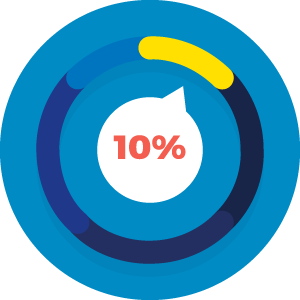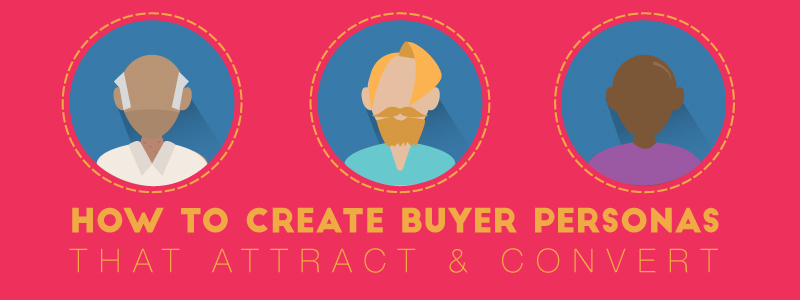
Why unique visitors is a vanity metric for your blog, and how effective blog posts are truly measured…
Businesses who blog, unless they’re sponsored and ad-driven like magazine publishers, are worried way too much about visitors, and not enough about conversions. They typically think effective blog posts are the ones that get the most visitors.
For these businesses, unique visitor count is a vanity metric. They should be focused more on increasing the conversion rate of their current website visitors before attracting new ones that will never convert (due to poor content, untargeted content, a lack of calls to action, and bad conversion architecture).
Instead they keep spending money on content that doesn’t convert (I’ll get to what type of content converts in a second, hold your horses.)
Sound like you? Spending money on content that doesn’t convert? You’re reading that paragraph and thinking, “F*ck.”
 If your blog isn’t converting visitors into buyers, why do you care how much traffic your blog gets? 100,000 visitors, 500,000? How’s your 0.01 conversion rate, eh? Imagine what you could do with a 10% conversion rate, rather than trying to get ten million visitors to generate the same amount of revenue. That’s exhausting. And you’re going to spend a lot of money on content you give away for free doing it.
If your blog isn’t converting visitors into buyers, why do you care how much traffic your blog gets? 100,000 visitors, 500,000? How’s your 0.01 conversion rate, eh? Imagine what you could do with a 10% conversion rate, rather than trying to get ten million visitors to generate the same amount of revenue. That’s exhausting. And you’re going to spend a lot of money on content you give away for free doing it.
Something common we run into with new clients is that they hired an SEO company to write them content, and then the content turns out to be so unrelated to their niche that it’s no wonder they’re not converting visitors into buyers.
Then of course we have to break the bad news to them, because these poor folks are SO proud of these posts—many of them drive a ton of traffic!
But why do you care if 100,000 unique visitors come to your blog per month for an article on how to make pickles, if you’re a CRM? Oh sure, maybe there are some salespeople who like to make pickles, but when they get to your article on pickles, they’re probably just going to…make pickles. Not buy your CRM. That’s not where their head is at. They want to make pickles.
The same goes for social media. Why do you care if any article gets a host of likes and retweets if nobody actually reads the article? A study by Dan Zarrella showed almost 15% of retweets in a sample had 0 clicks. That was a few years ago, and Twitter has gotten a lot more busy these days so I’m guessing that number has increased.
If you’re maintaining a conversion rate of 10% on the article, sure, more eyes the better. But are you? Maybe you should focus on conversion first.
What a bunch of likes and shares on Facebook actually means
 How many times have you been on Facebook and everyone has passed around an article that, upon clicking, is so very clear they didn’t read it. A great example is this clickbait: Actress Betty White, 93, Dyes Peacefully In Her Los Angeles Home.
How many times have you been on Facebook and everyone has passed around an article that, upon clicking, is so very clear they didn’t read it. A great example is this clickbait: Actress Betty White, 93, Dyes Peacefully In Her Los Angeles Home.
The first trigger warning should be the spelling of the word “dyes” but if you were trigger happy and clicked the share button before reading (as many people in social media do) then you didn’t see that the article is about dying her hair. But that didn’t stop it from circulating around social media in the flash of a second.
Do likes and shares mean your article was effective? Well, when we refer to effective blog posts we mean they were read, built loyalty, and could convert a visitor into a buyer. So, no.
What a bunch of likes and retweets on Twitter actually means
On Twitter how many times have you retweeted something based on the headline? So many. Guilty. You’re all, “I have to share something and I don’t want it to be about my food.” So you read a good headline and retweet it. I’m guilty of this, using the retweet tool as a bookmark so that it’ll be in my feed and I’ll come back and read it later. Do I ever? Rarely.
And how often do subject lines lie about the content? And how often are headlines more interesting than the content? Getting highly shared in social media is more of an indication of a good social copywriter than a good article.
Why are you measuring success in likes and retweets?
 As my friend and digital strategy consultant Mari Anne Snow says, “Facebook likes don’t convert into digital dollars.”
As my friend and digital strategy consultant Mari Anne Snow says, “Facebook likes don’t convert into digital dollars.”
Success should mean that people read the article – it requires measuring time on page.
Success should mean that people decided they like you and want to keep hearing from you – your email capture rate.
Success should mean that people converted into buyers – your landing page conversion rate.
Don’t get me wrong. Social media is good for a lot of things – like building engagement.
That’s why we write 12x12x12 Tweets (more on those formulas here). Sure we want to write a good headline tweet, but those aren’t the ones that convert best. The ones that convert best hone in on a pain point. They might not be the most reshared, but that’s because the exact right person is clicking instead. We’ll take the right person over any person.
All those likes and retweets may be a bigger indicator that people didn’t click. If they did click, they would have been too distracted by your fine content to share and like. Sure, some do, but how big of a percentage of people who read, go back to where they started to favorite, like or share? Not 100%. Probably not even 50%. Those who convert, probably even less. They completed their journey, that’s why.
The only real way to know if you’re publishing effective blog posts is to set up conversion funnels in Google Analytics to find out. If you’re measuring the success of your content only by traffic, you’re missing some really important data.
Are you ready to start publishing more effective content? Hire us!
This article was originally written in 2017 and has been updated.









